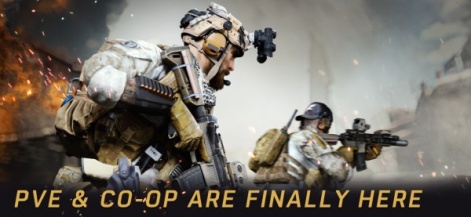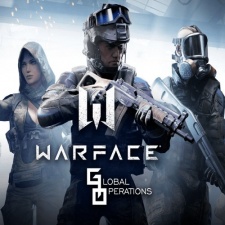After years of saying it couldn’t be done, the past 12 months have seen an explosion in successful mobile first-person shooters.
Indeed, what’s been notable is that this generation of games generate much of their mass-market appeal from being mobile IP expansions of existing console and PC franchises.
Call of Duty: Mobile is the most obvious example but the likes of Warface: Global Operations demonstrate that the trend extends beyond Activision’s behemoth.
In that context, we spoke to senior producer Alexander Savin and lead producer Dmitry Lyust from My.Games’ studio Whalekit about the process of bringing Crytek’s F2P PC shooter to smaller screens.
PocketGamer.biz: Whalekit’s expertise has always been 3D mobile shooters so how easy was it to bring Warface to mobile?
Whalekit: It is correct to say that we had many technological and design concepts prepared at the start which eliminated certain risks and sped up the launch: base code aside, it’s also graphics, shaders, animation system, UI, gunplay, data storage, and an understanding of shooter design elements.
This expertise helped us move forward in creating the game’s features without getting sidetracked to test prototypes and the like, but having our engineers focus on two of our primary challenges did require experimenting: free movement, and client-server interaction within PvP gameplay.
This combination of revamping the known and cutting down on the unknown has allowed us to show players the game’s alpha version and gauge their reactions just one year after development began. It was, fair to say, the first time our studio was working on a free movement shooter, and I think we did a pretty good job.
What were the main restrictions you had to overcome?
When we started discussing the project and brainstorming with the developers of the PC/console versions of Warface, we came to several important conclusions regarding limitations.
On one hand, we wanted to keep the franchise’s spirit of a realistic shooter alive, which limits your arsenal of weaponry, equipment and graphics solutions.

On the other hand, we all knew that a mobile shooter is a whole new reality with its own features, player preferences, etc. We definitely did not want to create artificial barriers. Our priority was to keep the game convenient and intuitive for mobile players, and not raise the barriers to entry for this not-too-casual genre.
We used this compromise as the foundation for our work on this project.
How did you balance the requirements to appeal to the game’s existing fanbase and also brand new players?
The title’s initial goal was to expand the franchise’s player base by moving into mobile, but we also couldn’t neglect the existing audience of the original PC/console Warface.
Our priority was to keep the game intuitive for mobile players, and not raise the barriers to entry for this not-too-casual genre.
We divided the solution into two stages: we launched the MVP (minimum viable product) in January 2020, and then we worked on developing it. When working on MVP build, we focused on getting the most important aspect right – our game had to be easy to play for mobile shooter players on the international market.
Inevitably, we had to change the game’s meta and some of the most important gameplay aspects from the PC/console version – from auto-aiming to map design as we needed to cater to mobile gameplay pacing.
Upon release we saw that for most players gameplay was intuitive and comfortable, but many players noted that it would be great if we added certain elements of the main games in the franchise. This is when the second stage began as we focused on player feedback. Quite quickly, we added sliding into the game, crouching, player control configurations, and began working on the PvE mode which was released in September.
How much interoperability is there between the mobile and PC/console versions?
The platforms and the audiences have their own specifics, and thus we had a separate project with its own mechanics that mobile gamers and Warface fans will find familiar.
Our title is built on the art of the original game. We used it when designing map geometry, and when adapting maps to our game with certain alterations, like we did with Hangar and District No. 4, as well as with weapons and mods, equipment, character skins, visual elements, etc.
We are following Warface updates very closely and adding content quickly, including new weapons, skins, location art, enemies in PvE, etc. If the original Warface were to collaborate with another franchise, we would also be taking part in that.

We also rely heavily on the original Warface’s analytics to understand the franchise’s fans better. We are obviously not talking about full integration or full compatibility, but we do exchange opinions about our players’ interests and when selecting features or content for new updates.
How did being a My.Games’ studio shape Warface: Global Operations?
We have access to marketing and analytical data of other studios, we can find out what we need or what is relevant from our colleagues without any limitations, we share expertise, and we get honest feedback from industry professionals.
So not only are we free to call the shots when it comes to development, being part of the MY.GAMES family has helped us find a perfect balance between weighing decisions and development speed, and we’ve been managing to stay up to pace – we release big updates almost every month.
What’s the reaction to the game been?
The game’s ratings in digital stores and player reviews have been mostly positive. Then of course there is feedback, where we deal with technical issues in network matchmaking, for example, which we have been improving with every update. We also get requests for new features or to improve existing ones.
We work with player feedback in every release, analyzing both general reviews and opinions on new features, trying to gauge what’s good and what has room for improvement.
Thanks to player feedback, we introduced sliding, crouching, a separate PvE raid, and a larger variety of maps and game modes.
Thanks to player feedback, we introduced sliding, crouching, a separate PvE raid which is very close to the PC/console version, and a larger variety of maps and game modes.
When it comes to separate features, we had multiple iterations with events like Gothic Arsenal or Ranked Games to make them more intuitive. We also constantly tweak weapons for balancing, catering to player requests and feedback.
What’s next?
It would be too early to show all our cards right now, but trust us – we have plenty in store when it comes to updates.
In PvP, we want to improve player experience by introducing additional tactical mechanics. We will also continue developing PvE, introducing seasonal elements, adding flexibility to completing the mode, and adding content like new raids or separate PvE missions.
There’s a separate improvement coming for the competitive aspect of the game very soon – that’s something we think and talk about all the time.
Naturally, new modes and content will be added regularly, just like they have been so far – new seasons, regular and themed events (like additional mechanics for Halloween), or small map matches in 2x2 or 1x1 modes.
You can find out more about Warface: Global Operations via its website.






















